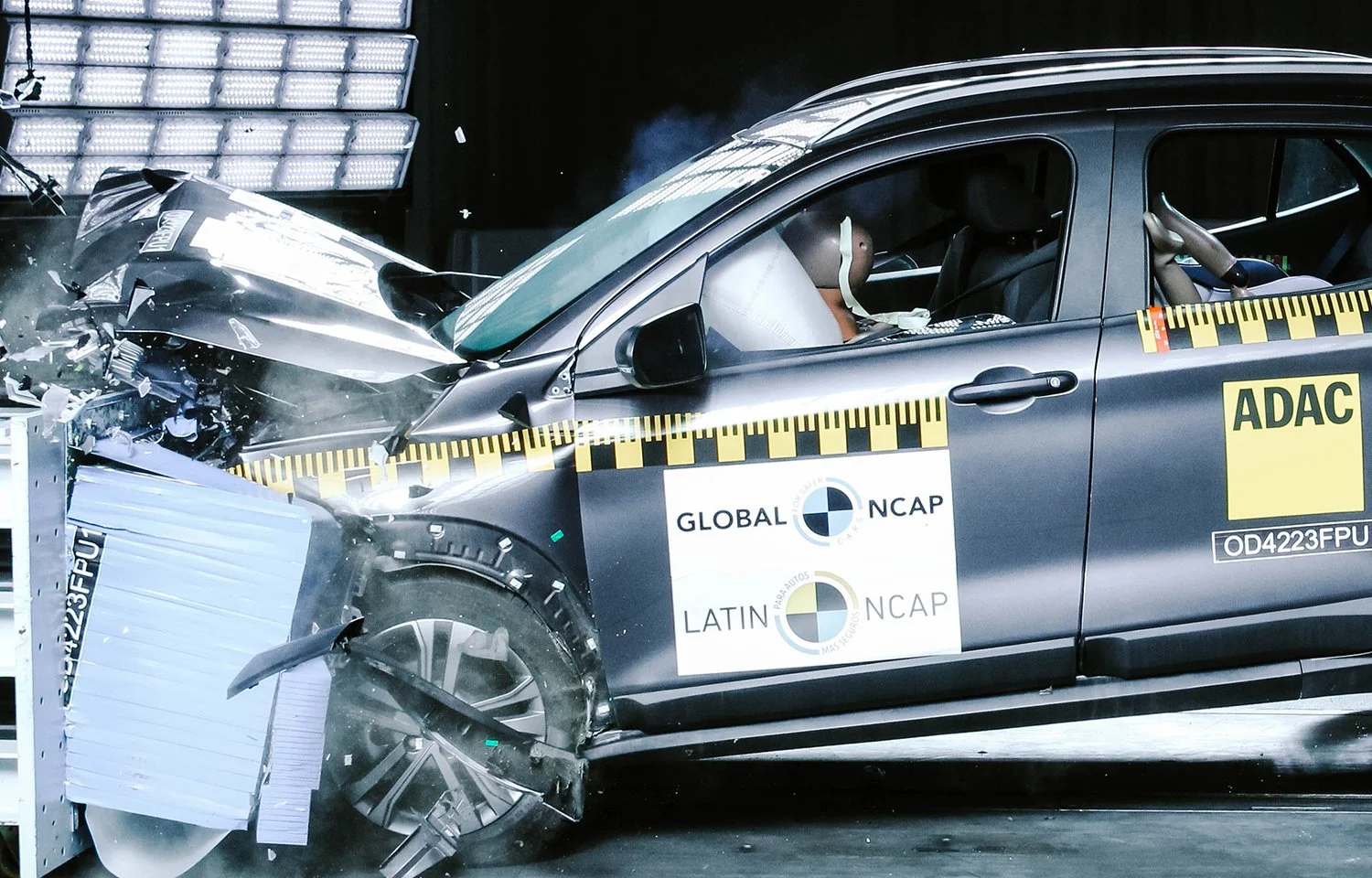Latin NCAP’s last 2023 result: Fiat Pulse reaches two stars
The New Car Assessment Programme for Latin America and the Caribbean, Latin NCAP, sixth publication for 2023 shows that there is room for improvement for the Fiat Pulse, despite the two stars result. The limited side head protection offered to the occupants, the low score in child occupant protection and in rear seat seatbelt reminders (SBR) and the limited availability of ADAS, among other things, restricted the car to achieve higher star rating.
The Fiat Pulse, produced in Brazil, was rated with two stars. The Pulse that offers 4 airbags and Electronic Stability Control (ESC) as standard achieved 67.18% in Adult Occupant, 55.88% in Child Occupant, 45.39% in Pedestrian Protection and Vulnerable Road Users and 55.81% in Safety Assist. The car was tested in frontal impact, side impact, pole side impact, whiplash, pedestrian protection and ESC/Moose tests. The most basic passive safety specification of the model was tested, some versions include Autonomous Emergency Braking (AEB) and Lane Support Systems (LSS) as optional.
The car showed stable structure and stable footwell area in the frontal crash. Side impact offered full protection to the adult. Side pole impact protection showed maginal to good levels of protection, however the limited coverage of the side head protection system penalized the full score of the car in the adult box. The model offers side thorax-head airbags but not curtain airbags as standard, limiting the protection only to the front seats and in a restricted spectrum as well. The thorax-head airbag systems can be a temporary solution but definitely not a robust one.
Child occupant protection was negatively affected by the limited protection to the head of the 3 year old dummy in the frontal and side impacts. Despite both dummies were installed reawards facing with good I-Size performing Child Restraing Systems (CRS) following recommended best practices, this poor performance is explained by the combination of the car with these CRSs. These CRSs offered full protection in other vehicles tested by Latin NCAP. The limited space for larger ISOFIX CRSs installation and the availability of the CRSs also negatively affected the score for the child occupant. Pedestrian assessment can show better protection levels as passive safety aspects needs to be improved and AEB for Vulnerable Road Users should become available meeting Latin NCAP prerequisites. ESC performance offered full score as well as speed limitation. SBRs in the rear seat can be improved to meet Latin NCAP requirements. AEB which are optional equipment did not meet minimum fitment and pre requisities to be assessed and scored in Latin NCAP.
Latin NCAP offered the manufacturer to assess the AEB systems in order to add their performance report to the publication to inform consumers, but Fiat declined to do so.
Alejandro Furas, Latin NCAP Secretary General said:
“Stellantis showed with the Fiat Pulse that they can include Latin NCAP requirements from the beginning of the development of a new model. However the safety strategy is still falling short in robustness, especially in relation to side impact head protection, structural performance in crash tests and AEB availability. These safety features and efforts must definitely come available as standard to the cheaper and more popular models, as other competitors already did. We urge once again Stellantis to improve the basic safety performance in all its model range. Latin NCAP has demonstrated that independent consumer information under a mandatory labelling system will change the market for safer vehicles without political friction. Consumers, fleet managers and governments should not buy cars that are not rated by Latin NCAP”.
Stephan Bordziak, Chairman of Latin NCAP Board of Directors said:
“We urge Fiat and the Stellantis group to improve basic safety in all their fleet, which has not been able to rate above two stars under current Latin NCAP assessment protocol. Specifically, it should focus on enhancing the side impact head protection and the protection of child passengers to prevent head contacts. Given the family oriented target that Fiat Pulse is trying to reach, we wish to see this model to dramatically improve its pedestrian protection, side head protection and the standard fitment of Autonomous Emergency Braking. All families and all road users deserve a better protection in the streets of Latin America, and we know that Stellantis can deliver it”.
Fiat Pulse (4 airbags)
Read full report
Watch crash test video
Download crash test images
About Latin NCAP
The Latin New Car Assessment Programme (Latin NCAP) was launched in 2010 to develop a regional system of independent crashworthiness and safety rating across Latin America and Caribbean (LAC). Latin NCAP replicates similar consumer testing programmes developed over the last thirty years in North America, Europe, Asia and Australia, and which have proved to be very effective in improving the safety of motor vehicles. Since 2010 Latin NCAP has published the results of more than 150 models, all results available at www.latinncap.com/en/results.
Latin NCAP acknowledges the support received by the Global New Car Assessment Programme (Global NCAP), International Consumer Research and Testing (ICRT), FIA Foundation, the Inter-American Development Bank (IDB) and Bloomberg Philanthropies Global Road Safety Initiative. Latin NCAP is an Associate member of Global NCAP and supports the United Nations Decade of Action for Road Safety and the Stop the Crash Partnership.
More info: www.latinncap.com





